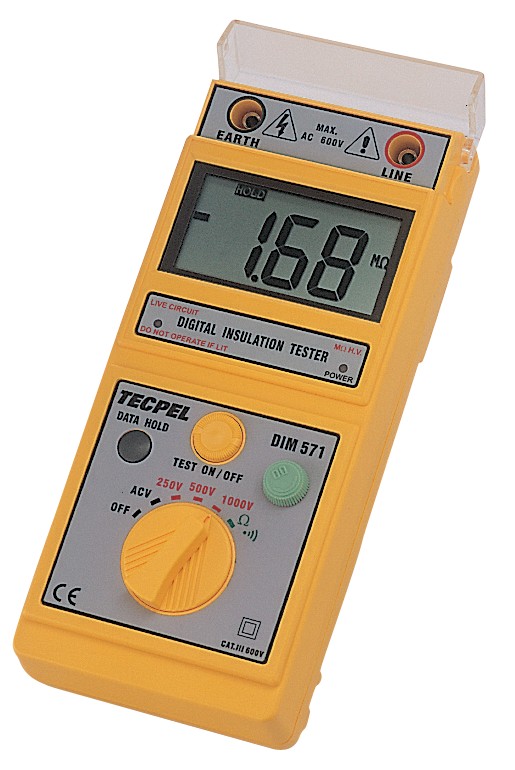- Why Insulation Test Is necessary?
- A. Insulation:
- 1. Every electrical apparatus and installation need to be safe for the user and for the equipment itself.
- 2. Electrical conductors of electricity need to be insulated from each other so that they do not create electrical hazard or unnecesary consumption.
- 3. Badly insulated circuits can create leakage current which can be dangerous and trip your GFCI, RCCB or ELCB.
- 4. Each Country regulate those levels at which the insulation ia aceptable.
- Generally, insulation resistance measurements are done between each conductor and the earth, and between each conductors.
- B. Continuity
- Checking the continuity of wires, complete circuits, connections, closure of contacts, circuit breakers, fuses, bounding resistance of connections, etc. are all very important.
- INSULATION RESISTANCE:
- Insulation Resistance:
- 1. Test Range DCV : 250V/500V/1000V
- 2. Meausuring Ranges(Auto) : 20/200/2,000M Ohm
- 3. Resolution: 0.01/ 0.1/ 1M Ohm
- 4. Output Voltage: Rated test voltage +10%
- 5. Output Current: 1mA DC
- 6. Power Consumption: Max consumption current Approx. 250mA
- 7. Accuracy: 20M Ohm : +/-(1.5% reading+ 5 dgts), 200M Ohm :+/-(2.5% reading + 3 dgts), 2000M Ohm : +/-(5% reading + 5 dgts)
- CONTUNITY TEST
- 1.Measuring Ranges (Auto) 20/ 200/ 2000 Ohm
- 2. Resolution: 0.01 / 0.1/ 1 Ohm
- 3. Buzzer Sound Below: Under 1 Ohm
- 4. Open circuit Terminal voltage: 4V DC Min
- 5. Short Circuit Terminal Current: 200mA DC Min
- 6. Power Consumption: Max. Consumption current Approx. 300mA
- AC VOLTAGE:
- 1. AC Voltage Ranges: 0 ~ 600V
- 2. Resolution: 1V
- 3. Line Frequency Range: 40 ~ 120 Hz
- 4. Accuracy: +/- (1.5% reading + 3 dgts)
- GENERAL SPECIFICATIONS:
- 1. LCD : 3 1/2 Digits , 2000 counts
- 2. Over range display: 1
- 3. Dimension: 205 (L) x 90(W) x 55(D) mm
- 4. Weight: 600 g Approx. (battery included)
- 5. Power Source: 1.5V (SUN-3) x 6 Type AA
- 6. Accessories: Insutrion Manual , test leads, Fuse (0.5A, 250V), Batteries, Hard carrying case.
|
